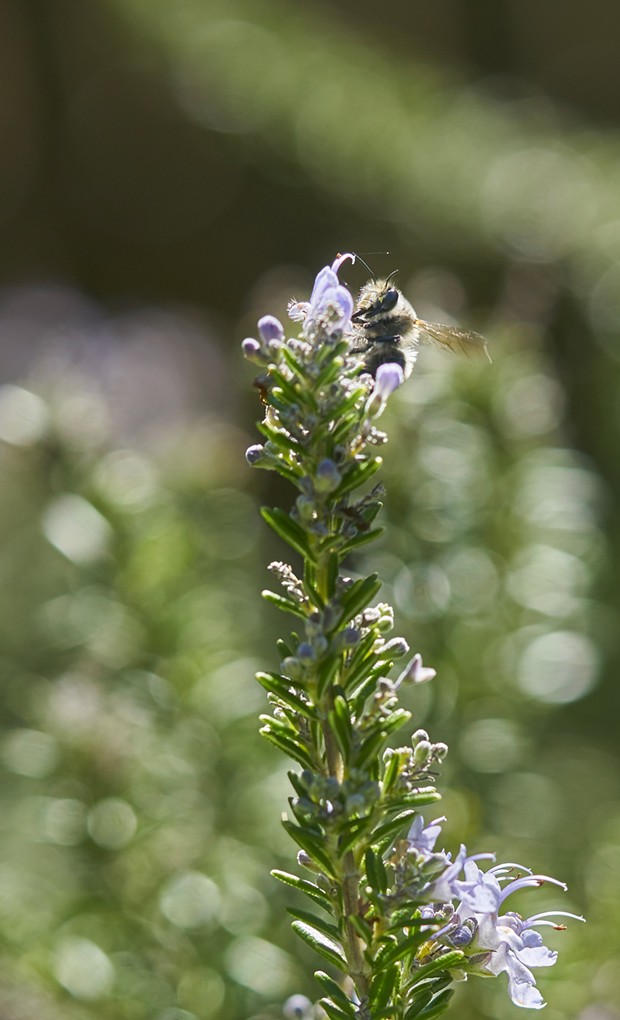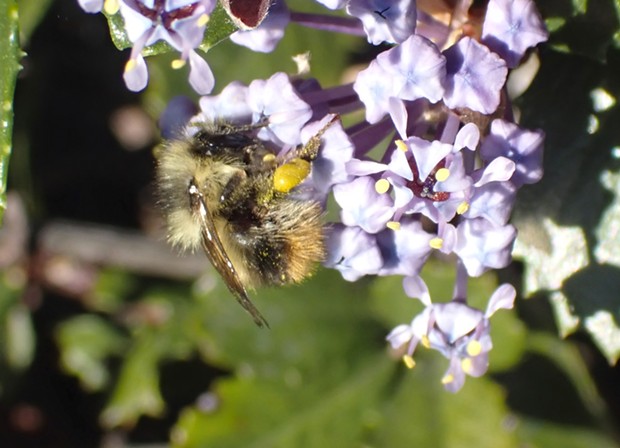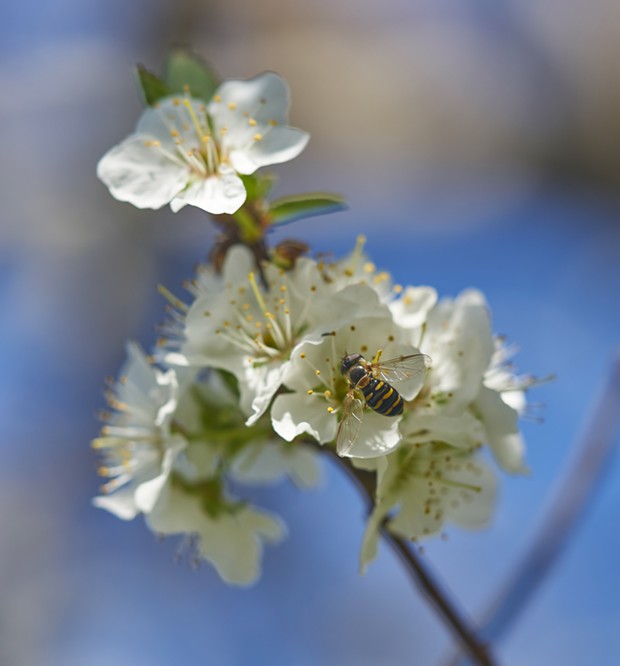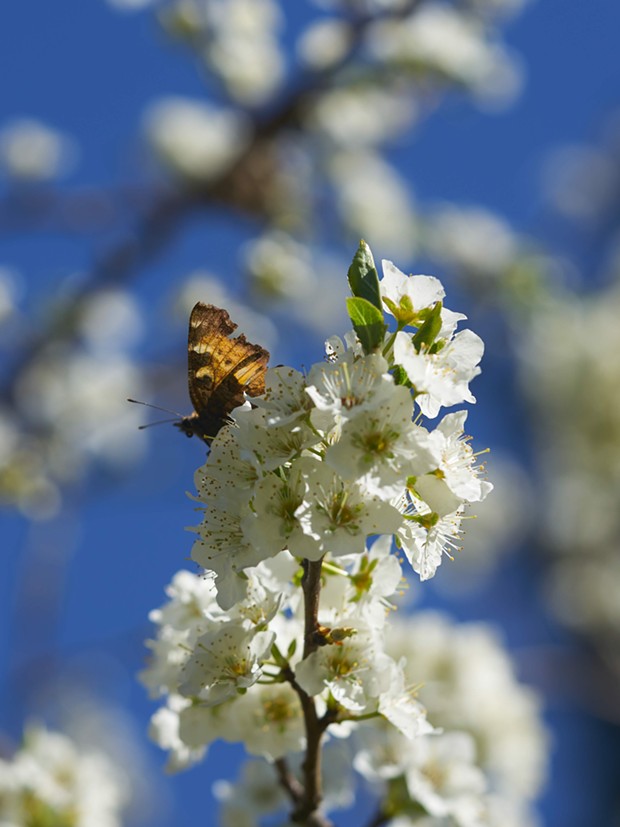HumBug Online
Spring is on the way. I saw my first trillium bloom of the year, and the daffodils and stone fruit trees are in full bloom. The last few sunny days have brought forth pollinators. I think it's kind of a chicken-and-egg problem. The flowers get pollinated by bugs. If the flowers aren't open the insects starve. If the flowers open and there are no insects, they don't get pollinated and don't set seed. The balance has been honed over millennia and everything works out. My rosemary is being serviced largely by the hirsute bees of the family anthrophora.
 These fuzzy, stocky bees are a bit larger than honeybees and are quick, nervous fliers. They are “solitary bees,” which means they don't have workers maintaining a nest. Each female burrows into the ground, lays eggs and sets out provisions for them. After reaching their adult phase, they go on alone.
These fuzzy, stocky bees are a bit larger than honeybees and are quick, nervous fliers. They are “solitary bees,” which means they don't have workers maintaining a nest. Each female burrows into the ground, lays eggs and sets out provisions for them. After reaching their adult phase, they go on alone.
 On Humboldt Hill, I watched tiny bumblebees servicing a low growing ceanothus. These are social bees. The queen builds the beginning of a nest, lays eggs and provisions for the larvae as they develop. When they mature into adults, they take over building, nest maintenance and foraging for the next generation. Come autumn, the new queens abandon the nest and go into hibernation alone, waiting to start their own nest in the spring. The old nest's social structure falls apart and the workers die off.
On Humboldt Hill, I watched tiny bumblebees servicing a low growing ceanothus. These are social bees. The queen builds the beginning of a nest, lays eggs and provisions for the larvae as they develop. When they mature into adults, they take over building, nest maintenance and foraging for the next generation. Come autumn, the new queens abandon the nest and go into hibernation alone, waiting to start their own nest in the spring. The old nest's social structure falls apart and the workers die off.
 My fruit trees however, are apparently almost exclusively pollinated by various varieties of flies. Hover flies, drone flies and even blue bottles dine on nectar and transfer pollen among the various plums in my yard. From the numbers I can see, it looks like I'll have a bumper crop of green gage plums this year.
My fruit trees however, are apparently almost exclusively pollinated by various varieties of flies. Hover flies, drone flies and even blue bottles dine on nectar and transfer pollen among the various plums in my yard. From the numbers I can see, it looks like I'll have a bumper crop of green gage plums this year.
 While I was photographing the flies, a single well-worn tortoise shell butterfly stopped to feed high among the blossoms.
While I was photographing the flies, a single well-worn tortoise shell butterfly stopped to feed high among the blossoms.

- Photo by Anthony Westkamper
- Fuzzy Anthrophora pacifica work diligently, harvesting pollen and nectar from rosemary.

- Photo by Anthony Westkamper
- Considerably smaller than a honeybee tiny bumblebees service ceanothus in Humboldt Hill.

- Photo by Anthony Westkamper
- Hover fly dines at green gage plum blossoms.

- Photo by Anthony Westkamper
- A single worn tortoise shell sips plum nectar.
Comments
Showing 1-1 of 1